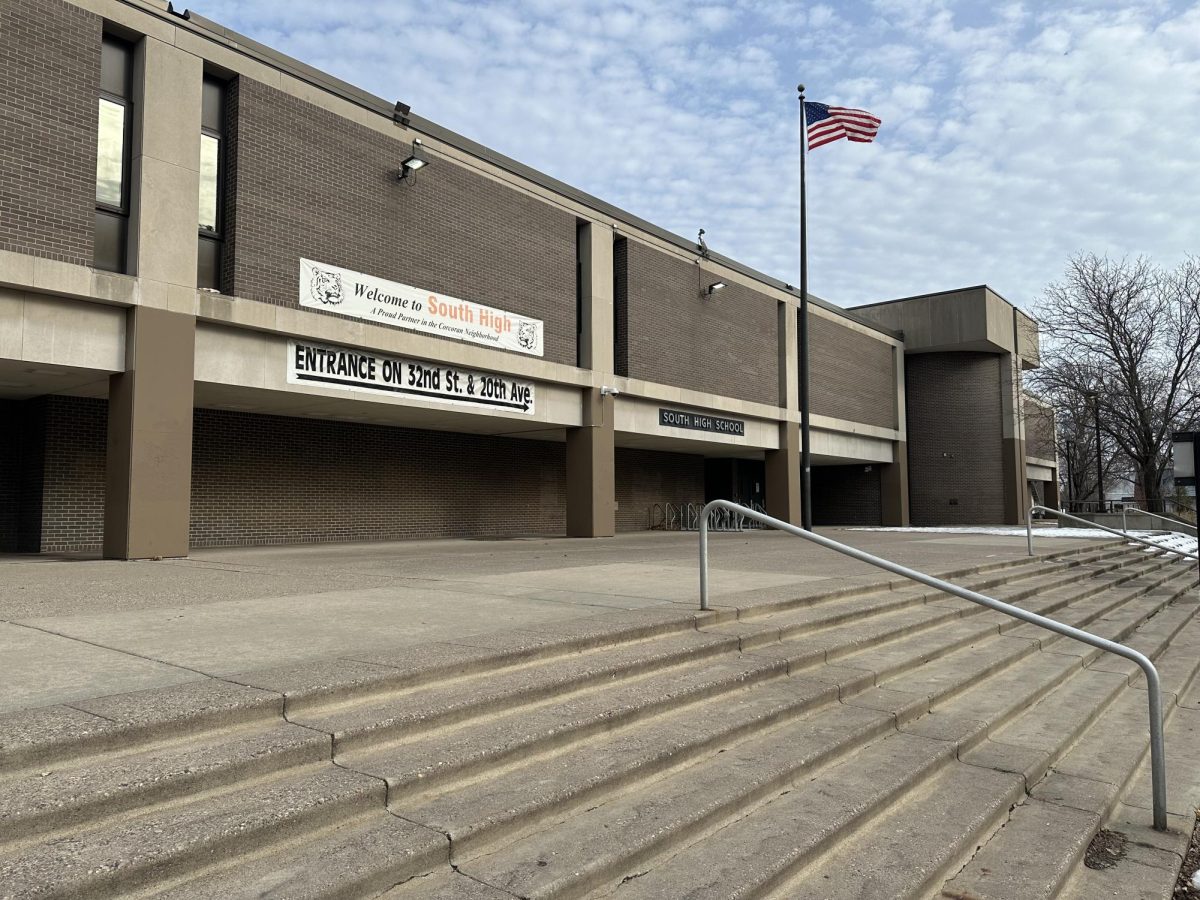Note: This article is a part of the Southerner’s special edition coverage of South’s 2024 budget cuts.
In the past decade, South High has lost one thousand students, and this downward trend will likely be exacerbated by the upcoming budget cuts. Underclassmen and their parents are panicking, with some even considering jumping ship before fall semester. Declining enrollment is often attributed to the Central District Design (CDD). While that’s part of it, the root of the issue stems from a larger movement towards privatized education and the resource battle between Minneapolis Public Schools and local charters. Nevertheless, South remains a hearty Minneapolis institution.
Minneapolis Public Schools (MPS) has always had a history of “in” and “out” schools and the recent decline in funding has definitely put South in the “out” category. But it’s important to take a long view of history. For those who grew up in the early 2000’s, it’s ironic that this year hundreds of kids are fighting for a spot at Washburn, because they remember its reputation as being the worst in the district. When choosing a school, parents, like local mother Sonia Coley, just want what’s best for their kids. Coley’s daughter was placed in the South zone by the CDD, but was able to secure a spot at Washburn. About their decision, Coley said, “While touring South we observed a good relationship with the staff members and heard a lot about the counseling and support staff. We were comfortable right away, but felt the visual arts and advanced academics were lacking.” It’s unfortunate they felt like their hands were tied, but at least they chose to participate in the public school system at all.
The district funds schools at a rate of $19,500 per student every year. Accordingly, every student who leaves MPS for another district, private, or charter school, creates a significant financial loss for their neighborhood school. Charter schools are particularly insidious because they’re privately owned and run for profit, but are also taxpayer funded. This means charters aren’t only sucking money from public schools by poaching their students, charters also take a percentage of public schools’ state funding as well.
Currently, 42% of Minneapolis children don’t attend MPS, and 28% attend a charter. The fear is that if these numbers progress past a certain threshold, longstanding institutions like South High will be disbanded, and the institutions that replace them would be inferior and unstable. The Washington Post found that between 47 and 54 percent of charter schools fail in the first 15 years of service. This is because resources in those schools are often allocated heavily towards advertising, and actual classrooms are neglected. “A lot of these schools are all marketing and glossy pamphlets. When you look at what the students are actually learning, they’re just getting worksheets from inexperienced teachers who are job-shopping for better pay and benefits elsewhere,” said art design teacher Corbin Doty. Staying enrolled is the last line of defense for equal opportunity of education and a powerful act of resistance against for-profit education.
One student who famously made this choice is senior varsity basketball player, Poet Davis. During his Sophomore year, Davis’ strongest teammates left South Athletics for other programs at private schools. Davis, however, decided to stay, saying, “It was really a blessing in disguise because it gave me the opportunity to step up and be a leader and give back to the first community I was a part of after COVID. Now we’ve gone farther than in the past 30 years.”
Currently, it seems that parents generally share two fundamental concerns about South: Safety and a lack of special programs and advanced academics tracks. The first is much easier to address. In January, South received a slew of bad press, fueled by misinformation peddled by disgruntled math teacher, Rebeccah Thompson. After anonymously appearing in two KSTP-TV stories, she published an open letter in the Star Tribune claiming, “I can tell you of a young man showing up at South only to deal fentanyl. I can tell you stories of a gang hit only narrowly thwarted in the lunchroom. I can explain how teachers’ cars are stolen right from the lot and no one does anything.” South High Restorative Advocate Alex Endashaw refuted and condemned these claims saying, “The engagement team has never confronted issues of fentanyl dealing… We saw one staff member’s car stolen from the lot in September 2021, but that was before Ms. Thompson even began teaching here… and we haven’t even had to worry about student gang activity in years. There may be students who don’t see eye to eye, but framing anything here as a gang hit is so divorced from reality it must be intentionally dishonest.”
Unfortunately, despite South insiders being able to see through these hyperbolic accounts, many community members didn’t. These stories fit perfectly into the narrative that South is declining. South has the highest concentration of poverty of every high school in the district, and as Doty pointed out, “Our culture has this sentiment that high-poverty schools are automatically worse or more dangerous. ‘High-poverty school’ is often a proxy term for a bad school. But what does that really mean? Higher poverty is often reflected in BIPOC groups, so insinuating that poverty-stricken schools are inherently worse or violent is highly problematic.”
Taking a holistic view, South’s diversity actually makes the school much safer for anyone from outside dominant american culture. South’s unique location between multiple distinct neighborhoods, all of which united by overarching values of social justice, creates an environment where no one is made to feel singled out and friendships can comfortably form between students from completely different cultural upbringings.
Because those connections can be made across cultural lines, South students receive two educations: One from their teachers and one from their classmates. And the beauty of that cannot be tainted by any budget cut because it comes from student’s unique lived experiences. It can only begin to fade as students leave the school. It’s understandable to feel hopeless about such a massive cut but nothing will get better if you just throw in the towel. Poet Davis is just one example of bottom up change from dedicated student leadership. The fact of the matter is this isn’t going to be the last budget cut, and meaningful change at South isn’t even guaranteed if the nice people at the district decide to take out the city’s checkbook. Change needs to be enacted from within. So many South High staples originate from the visions of former dedicated students. The impact just one student can have on this school is astounding, and begs the question, could that student be you?


